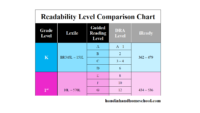Many children easily master the basic reading process. They go from sounding out individual words to reading full sentences breathlessly.
Some parents, however, discover that their child’s reading comprehension doesn’t quite match their reading level. The kiddo can read words, but they can’t seem to tell you what happened in the story.
A learning disability seems unlikely in a case like this. Just like you took the time to teach phonics and vocabulary, reading comprehension is a skill that must be taught.
To support reading comprehension, you can teach your kids to use any of the following 11 reading strategies. Most nonfiction books for children, as well as college textbooks, actually embed many these reading comprehension strategies into their pages. Helping children know where to look for clues will help them build stronger overall comprehension skills.
When introducing reading strategies, it’s best to do it side-by-side with your child. Even if your child is 10-years old, model the process. Practice these strategies out loud with your child for at least two weeks. After that, encourage your child to use these strategies on their own will so they can be their own reading coach.
Making Predictions
- Read the title of the book or the chapter heading. Look at the pictures on the front cover.
- Ask your child what they think the story or nonfiction book may be about.
- At the end of the story, talk about why one prediction was right and how words can have two meanings.
- Example: Sometimes you may want to just say, “Good guess. Let’s find out if you’re right.” Other times, you can encourage your child to make a second prediction if you know they’re way off base.
Activating Prior Knowledge
- Tickling the brain to think about a topic gets a child ready to learn new information.
- Example: Before you even open up a book about the human body, ask your child what they already know about the topic. Having your mind already focused on body parts and system prepares you to more easily file away new tidbits of information you’ll be reading about.
Preview Vocabulary
- Introduce new words that will be used in the book or a certain chapter before you start reading.
- Stop reading when you come across the word. Review it to make sure the child remembers its meaning.
- Example: Draw a color-coded definition card to remember the difference between arteries and veins.
Look at Summary and Objective Points
- Take the time to review the Objective Box found at the top of most nonfiction book chapters.
- Briefly review the main points the text will cover.
- Knowing what to look for in the text will help to cue a reader for key words and ideas.
- Example: Knowing what to anticipate helps a person stay focused. If you think you’ll be reading about human bones but, instead the section is about organs, the reader may skim over important information.
Look at Pictures and Charts
- Before you begin reading, flip through the chapter or book and look at the pictures, tables, and charts.
- This is another way to Activate Prior Knowledge, as you think about where you’ve seen similar pictures before.
- Example: When you read a text with lots of number facts, check to see if the information was also presented in a chart form. Seeing the information organized in a different way can help you re-organize it in your own mind.
Summarize Periodically
- Identifying topic sentences, usually either the first or last sentence in a paragraph, is an easy way to summarize.
- If a section is especially long, find convenient paragraph breaks and summarize together.
- If you find your child is off-topic with their summary, redirect their attention back to the Objective Box at the beginning of the chapter.
- Example: Textbooks Headers are built-in section breaks where you can pause and ask your child what she just read.
Use Context Clues
- Look at the surrounding words in the sentence and paragraph to see if the writer gives you extra clues to what a word means.
- Look at the pictures or captions on the page for additional information
- Look up a word in the book’s glossary
- Example: Fiction authors often embed definitions of unfamiliar words within a sentence?
Make Comparisons
- Compare what you’ve just read in a text with what the child already knows about the topic.
- Example: If you read a fact that is inconsistent with something you already know or just doesn’t make any sense, talk about it. You may have misread. You may be mis-remembering. The author could possibly be wrong. Or, you may be learning something know. In all these cases, this is an excellent opportunity to show how comprehension checks are important to understanding.
Map Your New Information On Paper
- Rule #1 about note-taking: Always wait until you finished reading your section before you begin taking notes – otherwise you might not know what’s important to write down.
- Example: Take a blank piece of paper and write the main topic in the center. Draw a straight line off that main idea and write down the first big idea that you and your child just read. Continue to brainstorm all the topics you read about, as well as what you already know. Watch how your idea map grows.
Answer Comprehension Questions
- Always begin by focusing attention on literal comprehension questions. Ask basic questions about Who, What, When, and Where. These questions can always be answered by looking back at the text.
- Interpretive questions force a child to infer information not specifically stated in the text. They ask the questions Why, What if, and How.
- Applied questions don’t always have a right or wrong answer to them. These questions have a reader extend information from the text to other situations and topics. They can also ask a reader to provide an opinion on the facts, by backing up their answer with a rationale. Applied questions are the hardest of all comprehension questions and not generally used with kids in 3rd grade or under.
Re-Reading the Text
- During the first reading of a new text, children often focus on reading each word and getting to the end. If a text is at the upper end of a child’s challenge level, they may not comprehend everything they read the first time.
- Don’t stress if your child doesn’t full comprehend what they read the first time. Wait a day and have your child re-read the same text. You may be surprised by how much more they get out of the text the second time around.
Last modified on September 3, 2023




